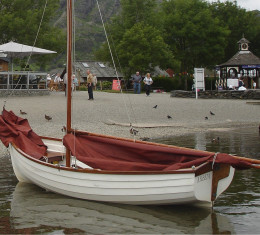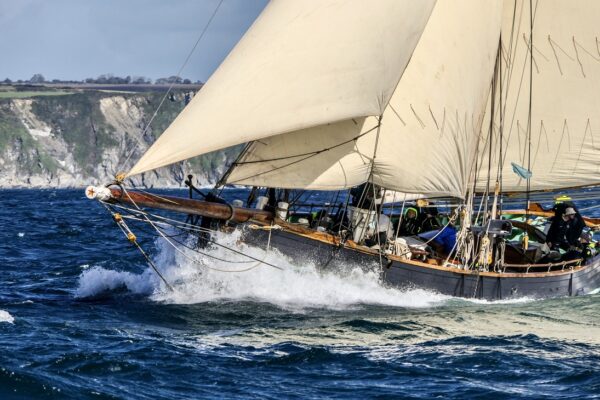Small craft
Full specification
Wooden ships comments on this Royal Dart One design
The Royal Dart One Design, not to be confused with the smaller Dart One design was drawn before the War by F Morgan Giles, drawing No 345 and most of the boats were built in his Teignmouth Devon yard in the 1950’s.
The design is similar to the Teign One Design which has a more square fore foot and has some similarities with the Salcombe Yawl, both Morgan Giles designs.
A fleet of these half-deck sailing dinghies sailed and raced under the burgee of the Royal Dart Yacht Club, Kingswear by Dartmouth and there are still many people who have fond memories of sailing these boats 50 years ago.
The RDOD was 16’6” long with a marked rocker to the keel and a rounded fore foot.
The hull was planked in mahogany all copper fastened to steam bent oak timbers on an oak back-bone with a transom stern.
A ply fore deck and side decks increased their capability.
A very heavy galvanised steel centre plate in a mahogany centre-board casing identified by it’s hump-back shape and stabilised by the midships thwart was operated by a wheel gear mechanism turned by a lanyard to the helm aft.
Simple varnished mahogany benches each side back to the transom.
Lifting rudder.
Most boats were varnished inside and out like this one with a painted deck.
Aluminium mast steps on the keel against the angle of the fore deck.
Stainless steel rigging.
Mainsail and jib.
Boom sheets to a bronze track on the transom top edge.
Roller head sail mechanism on the fore stay.
Manual bilge pump.
Wooden Ships classic yachts brokers have an extensive database of boats for sale. With a wide range of sailboats, classic yachts, motor yachts and small classic boats, Wooden Ships has one of the largest selections of traditional wooden boats and yachts for sale in the UK.
Disclaimer:
These particulars have been prepared in good faith from information provided by the Vendors and are intended as a guide, Wooden Ships cannot guarantee or warrant the accuracy of this information nor warrant the condition of the vessel. The Purchaser should instruct his agent or surveyor to validate all details as necessary and satisfy himself with the condition of the vessel and its equipment.




















